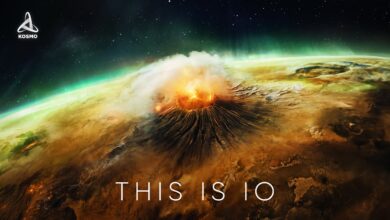The Most Horrifying Details About the Apollo Missions That NASA Tried to Hide
The Most Horrifying Details About the Apollo Missions That NASA Tried to Hide

Human curiosity and the desire for discovery have always driven humanity to surpass limits and explore beyond the stars. The Apollo missions, a hallmark of American achievement, are often intertwined with conspiracy theories and meaningful secrets that some believe NASA and the U.S. government has secured. From unfulfilled partnerships with rival nations to eerie contingency plans and unexplained anomalies, these missions remain shrouded in intrigue. Below are some of the most startingling revelations.
**1. A U.S.-Soviet Joint Lunar Mission Proposal**
During the height of the Space Race, President John F. Kennedy proposed a collaborative lunar mission with the Soviet Union. The proposal aims to unite the two superpowers in a shared pursuit of space exploration. However, the plan never materialized, mainly due to Kennedy’s assassination and the ongoing rivalry between the nations.
**2. An Alternate Speech for a Lunar Disaster**
On July 20, 1969, President Richard Nixon delivered a triumphant address celebrating Apollo 11’s success. However, a chilling alternative speech was prepared in case the mission ended in disaster. The speech included the haunting line: *”Fate has ordained that the men who went to the moon to explore in peace will stay on the moon to rest in peace.”* Fortunately, this speech was never needed.
**3. Why We Never Returned to the Moon**
Many questions why lunar missions ceased after the Apollo program. While conspiracy theories abound, the reality lies in practical reasons—budget constraints and shifting priorities. NASA decided to redirect resources to other scientific endeavors after achieving its goal of landing humans on the moon.
**4. Apollo 12’s Lightning Strike**
Apollo 12’s launch on November 14, 1969, was marked by an unexpected danger: the spacecraft was struck by lightning twice shortly after liftoff. Despite the chaos, quick thinking by flight controller John Aaron allowed the crew to continue their mission successfully.

**5. Apollo 7’s Crew Tensions**
The first manned Apollo mission, Apollo 7, faced significant interpersonal conflicts among the crew, exacerbated by the cramped quarters and personal grief. Despite the tension, the mission was completed successfully.
**6. Apollo 14’s Secret ESP Experiment**
Astronaut Edgar Mitchell conducted a covert experiment during Apollo 14 to test extra-sensory perception (ESP). Using numbered cards, he attempted to transmit symbols to participants on Earth. While controversial, Mitchell claimed the experiment yielded significant results.
**7. Alleged Extraterrestrial Discoveries**
In 2007, former NASA official William Rutledge claimed the Apollo missions uncovered extraterrestrial structures on the moon. He meant that a classified Apollo 20 mission explored a vast ancient city and alien spacecraft. These claims have been widely dismissed as hoaxes but continue to spark curiosity.
**8. The “Space Music” Mystery**
Apollo 10 astronauts reported hearing eerie, high-pitched sounds while orbiting the moon’s far side, where communication with Earth was cut off. The unexplained noises remain a topic of speculation, with theories ranging from mechanical interference to alien signals.
**9. The Hollow Moon Theory**
Seismic experiments conducted during Apollo 12 revealed unusual vibrations on the moon, leading to conspiracy theories suggesting it is hollow or artificially constructed. While scientists attribute the phenomena to the moon’s structure, the theory persists among enthusiasts.
**10. The Disappearance of the Apollo 11 Tapes**
The original tapes of Apollo 11’s moon landing were reported missing in 1983, fueling speculation about whether the landing was real. NASA attributed the loss to the reuse of magnetic tape during a time when storage was expensive.
The Apollo missions, celebrated as monumental achievements, continue to captivate the world with their blend of triumphs, risks, and mysteries. Whether rooted in fact or fueled by speculation, the stories surrounding these missions highlight the enduring allure of humanity’s quest for the unknown.
**Astronauts and Lunar Mysteries**
During their lunar expeditions, the Apollo astronauts might not have been as alone as previously thought. Images from their missions have sparked speculation about extraterrestrial life, with some theorizing that remnants on the lunar surface could be the result of an ancient alien mission. These claims have raised questions: What did NASA discover on the moon? And why has this information been withheld from the public for so long? Share your thoughts with #FancyTopic.
—
**#10: Neil Armstrong’s Near-Fatal Crash in 1968**
Neil Armstrong, famous for taking the first steps on the moon in 1969, almost didn’t make it to that historic moment. On May 6, 1968, he piloted the Lunar Landing Research Vehicle (LLRV) during a test flight at Ellington Air Force Base in Houston, Texas. The LLRV was designed to simulate the challenges of landing on the moon, but during one flight, a malfunction in its control thrusters caused it to spiral out of control just 200 feet above the ground. In the final seconds before the vehicle erupted into a fireball, Armstrong’s quick reflexes allowed him to eject, narrowly escaping death. This harrowing incident highlights the dangers of space exploration and the immense skill of the astronauts who undertook these missions.
—
**#9: The Apollo 1 Tragedy**
The Apollo program faces significant setbacks before its triumphant moments. On January 27, 1967, a fire broke out during a pre-launch test of the Apollo 1 spacecraft. The cabin, filled with pure oxygen, became a deadly environment when a simple malfunction ignited a blaze. The three astronauts aboard—Gus Grissom, Ed White, and Roger Chaffee—tragically lost their lives. This shocked the nation and led to a comprehensive overhaul of NASA’s safety protocols, ensuring future missions would be safer.
—
**#8: The Low-Fuel Crisis**
The Apollo 11 mission faces a tense moment as Neil Armstrong and Buzz Aldrin prepare to land on the moon. During the descent, an unexpected computer overload forced the astronauts to execute an emergency maneuver, burning more fuel than anticipated. With the fuel gauge dangerously low, Armstrong and Aldrin managed to safely land the Lunar Module, avoiding disaster and ensuring the mission’s success.
—
**#7: A Close Encounter with Space Debris**
As Apollo 11 made its way back to Earth, the crew narrowly avoided a collision with a piece of space debris from a previous mission. This discarded equipment came dangerously close to the spacecraft, but precise maneuvering and a stroke of luck allowed the crew to avoid catastrophe. This incident underscores the ever-present risks of space junk and the fragile nature of space missions.
—
**#6: Stormy Weather and Missing Footage**
The Apollo 11 re-entry faced unexpected challenges due to poor weather conditions. The spacecraft veered off course, landing in a different location in the Pacific Ocean. Unfortunately, the camera crew stationed at the original site failed to capture the iconic return, fueling conspiracy theories. Despite the harsh conditions, the astronauts were safely recovered, highlighting the unpredictable nature of space exploration.
—
**#5: Overshooting the Landing Zone**
Apollo 11’s Lunar Module deviated from its planned landing site in the Sea of Tranquility by about four miles. The area it landed in was filled with hazardous boulders and craters, but Armstrong and Aldrin skillfully guided the module to a safe spot, acknowledging their exceptional training and composure under pressure.
—
**#4: A Computer Error Almost Derailed the Landing**
Minutes before landing on the moon, Apollo 11’s guidance computer froze, displaying an error code that had never been encountered before. Armstrong and Aldrin, supported by Mission Control, remained calm and resolved the issue, allowing the mission to proceed. Their quick thinking turned a potentially disastrous situation into a historic triumph.
—
**#3: Frozen Fuel Line**
During Apollo 11’s descent, Mission Control noticed a dangerous pressure buildup in the fuel line caused by freezing temperatures. The blockage threatens to trigger a catastrophic explosion. Fortunately, the issue resolved itself without the astronauts realizing the peril they were in, allowing them to continue their unharmed mission.
—
**#2: Stuck in the Lunar Module**
Before stepping onto the moon’s surface, Armstrong and Aldrin faced a critical problem: the hatch of the Lunar Module wouldn’t open. Buzz Aldrin carefully manipulated the hatch, risking its integrity, and successfully managed to free it. This allows the astronauts to make their historic moonwalk.
—
**#1: A Broken Circuit Breaker**
After completing their lunar mission, Armstrong and Aldrin encountered another life-threatening issue. A broken circuit breaker, essential for igniting the ascent engine, threatens to leave them








